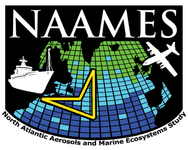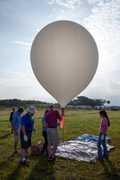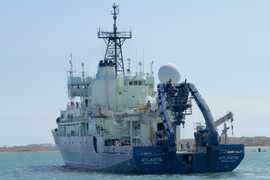
North Atlantic Aerosols and Marine Ecosystems Study
Carbon Cycle & Ecosystems
- 4
- view all deployment datesDeployments
2015-11-05 2015-12-02 2016-05-11 2016-06-05 2017-08-30 2017-09-24 2018-03-20 2018-04-13 - 3
- Platforms
- 13
- Data Products
The Campaign
The North Atlantic Aerosols and Marine Ecosystems Study (NAAMES) focused on studying the phytoplankton life cycle and how it impacts marine aerosols and boundary layer clouds. NAAMES conducted four deployments over the northwestern Atlantic Ocean from 2015 to 2018. Data were collected using aircraft, a research vessel, satellites, and land-based atmospheric monitoring stations to observe ocean ecosystem processes, emissions of ocean-generated aerosols and precursor gases, and subsequent atmospheric changes and processing. NAAMES was one of NASA’s Earth Venture Suborbital-2 projects.
N: 60°N
S: 30°N
W: 75°W
E: 5°W
Additional Notes
Repositories

Campaign Balloons

C-130 Hercules

R/V Atlantis

C-130 Hercules
Events
Filter data products from this campaign by specific platforms, instruments, or formats.
